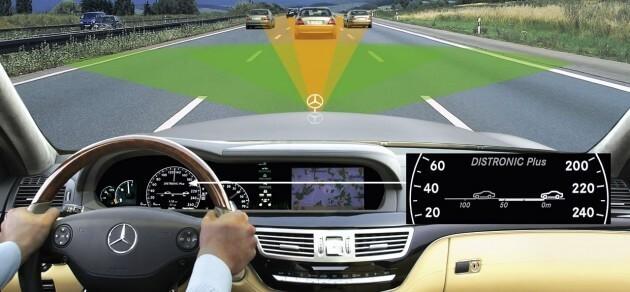558
By 2022, the automatic braking system will be included in the base vehicle equipment
US Department of Transportation, National Highway Traffic Safety Administration (NHTSA) and the Insurance Institute for Highway Safety said today that, starting from 2022, all new vehicles from 20 automakers will have to be in the base system of autonomous emergency braking (AEB).
20 producers agreed to comply with the requirements of these organizations, cover about 99% of US auto market. The list includes Audi, BMW, FCA US LLC, Ford, General Motors, Honda, Hyundai, Jaguar Land Rover, Kia, Maserati, Mazda, Mercedes-Benz, Mitsubishi Motors, Nissan, Porsche, Subaru, Tesla Motors Inc., Toyota, Volkswagen and Volvo Car USA.
Automatic collision avoidance system using various types of sensors to measure the distance to the nearest object to the vehicle and warn the driver of the need to slow down. If the driver does not react, the system takes control braking control itself.

While there are only such system in some car manufacturers - for example, Subaru EyeSight, Mercedes-Benz Pre-Safe and Honda Sensing. Such systems are optional on vehicles, the value of which sometimes reaches $ 1,000.
The NHTSA believes that this agreement will save as much as three years, which would require the introduction of such systems in the event that the agency would be under compulsion forced automakers to do it. And for three years - a 28,000 accidents and 12,000 people receiving injuries of varying degrees
. Basics of a successful agreement was laid in September 2015, when the US Department of Transportation and the Insurance Institute for Highway Safety offered to automakers to equip new models AEB systems and received a positive response from 10 manufacturers.
In December 2015 the US Department of Transportation has announced that 2018 will launch a new vehicle safety rating system, where AEB system will be evaluated on a 5-point scale.
In Europe, since last year all new cars for commercial purpose should already be equipped with autonomous emergency braking systems.
20 producers agreed to comply with the requirements of these organizations, cover about 99% of US auto market. The list includes Audi, BMW, FCA US LLC, Ford, General Motors, Honda, Hyundai, Jaguar Land Rover, Kia, Maserati, Mazda, Mercedes-Benz, Mitsubishi Motors, Nissan, Porsche, Subaru, Tesla Motors Inc., Toyota, Volkswagen and Volvo Car USA.
Automatic collision avoidance system using various types of sensors to measure the distance to the nearest object to the vehicle and warn the driver of the need to slow down. If the driver does not react, the system takes control braking control itself.

While there are only such system in some car manufacturers - for example, Subaru EyeSight, Mercedes-Benz Pre-Safe and Honda Sensing. Such systems are optional on vehicles, the value of which sometimes reaches $ 1,000.
The NHTSA believes that this agreement will save as much as three years, which would require the introduction of such systems in the event that the agency would be under compulsion forced automakers to do it. And for three years - a 28,000 accidents and 12,000 people receiving injuries of varying degrees
. Basics of a successful agreement was laid in September 2015, when the US Department of Transportation and the Insurance Institute for Highway Safety offered to automakers to equip new models AEB systems and received a positive response from 10 manufacturers.
In December 2015 the US Department of Transportation has announced that 2018 will launch a new vehicle safety rating system, where AEB system will be evaluated on a 5-point scale.
In Europe, since last year all new cars for commercial purpose should already be equipped with autonomous emergency braking systems.
Useless products and services that generate billions of dollars
The innovative display-battery for mobile gadgets























